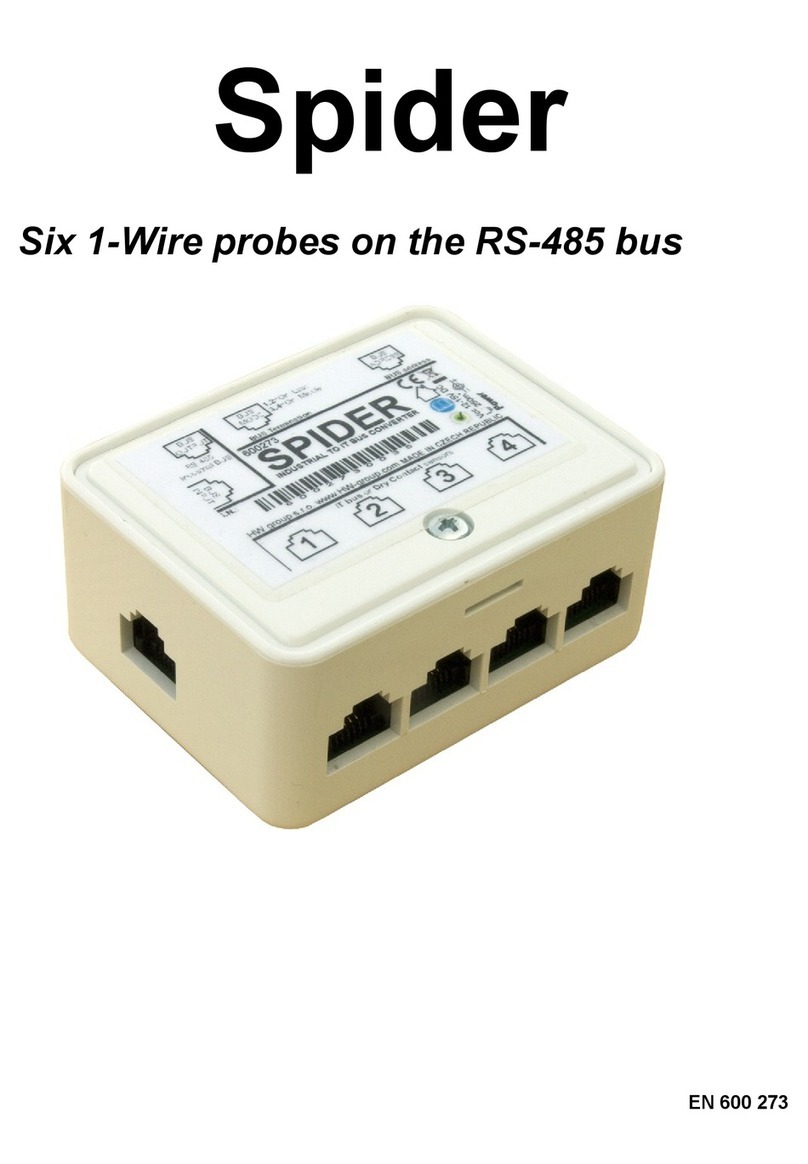IP Relay – 2x relay + RS-232 / Ethernet converter HW group
June 2006 www.HW-group.com Page 10 / 28
Controlling the IP Relay with HW Virtual Serial Port
Virtual serial port HW VSP includes simple functions for controlling the input/output binary lines of
the devices produced by Hwgroup such as I/O Controller and IP Relay. These additional functions
can be found in the Binary I/O bookmark of the HW Virtual Port Manager program. For more
detailed information about HW Virtual serial port see the
following chapter: HW VSP – Virtual serial port.
1. Install and run the HW VSP.
2. In the UDP Setup tab press the Search modules
button and choose a device’s MAC address from
the Modules MAC list window. The fields of the
Module parameters will be filled by data from the IP
Relay. Pressing the Use this IP button will load the
communication parameters into HW VSP.
3. Switch to the Binary I/O tap and then to the IP
Relay.
4. Pressing the Read Values button will load the
actual state.
5. The On and Off switches can define whether the
relay will be active for Channel 1 or Channel 2 ().
Writing is achieved by appropriate Set button.
While reading and writing there is an indication of
the communication state displayed in the down left
corner of the IP Relay’s window.
6. The Red LED field allows lighting up and turning down the red LED. Writing is achieved by a
proper Set button.
Warning: The buttons allow writing the state of the relay or LED separately. Changing state
of both Relay and LED at once is not possible!
•The Output types table represents the state of the relay’s outputs for its configuration in closed
and open state. (see chapter Device version)
•The item DIP2 displays the state of DIP2 switch, if the PD4 was preset to log. H.
SETUP troubleshooting
•No MAC address has appeared in the „Modules MAC list“ or the device doesn’t
communicate over Ethernet
•Check if the power supply adaptor is connected (the green Power indicator must be lit)
•Your Ethernet network must support 10 Mbit devices.
•Check if you are using the correct TP cable (TP Patch cable for a hub/switch/router
connection, crossed TP cable for direct PC connection.
•Check the configuration of DIP switches of the device (all should be in the OFF position). If
the DIP 1 is in the ON position, the device is in the RS-232 setup mode and does not
communicate over Ethernet. After switching the DIP 1 into OFF position it’s necessary to
restart the device by interrupting the power supply for at least 3 seconds.
•If you are using a firewall, check if it doesn’t block communication with the device.





























